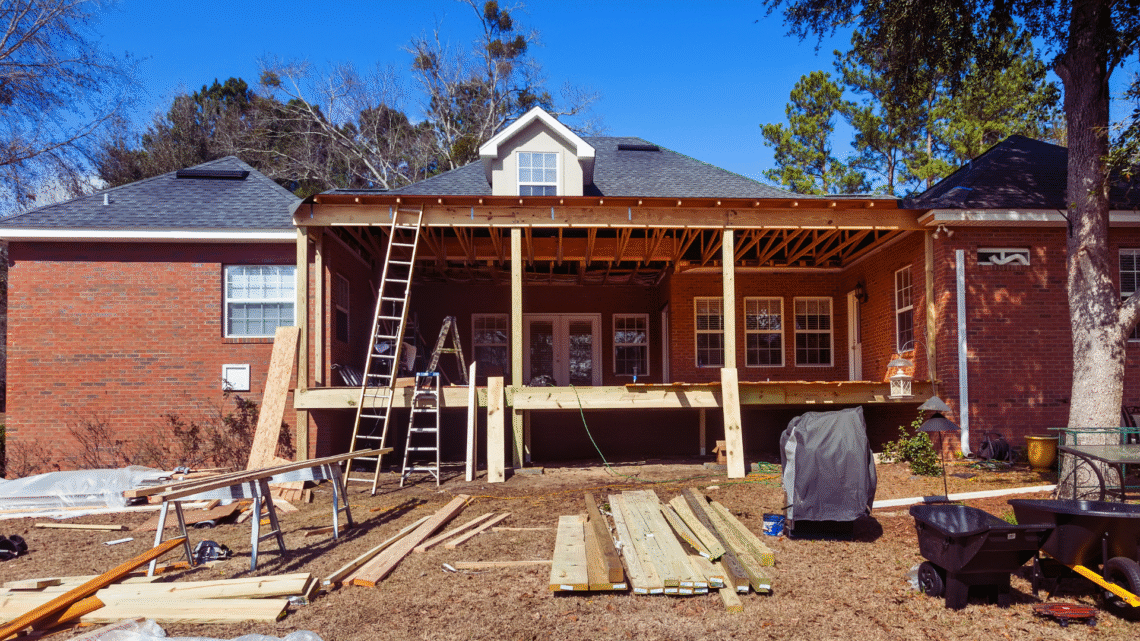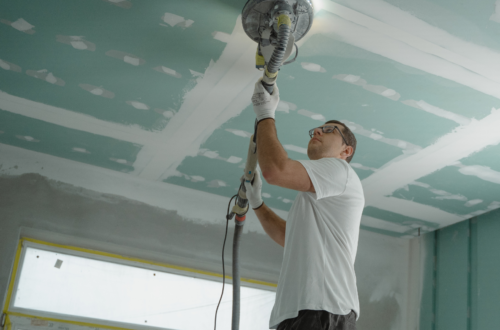
How to Plan Your Home Improvement Timeline for Successful Renovations
Planning a home improvement project can be daunting, but creating a clear timeline can make the process manageable and stress-free. A well-structured timeline helps prioritize tasks, allocate resources effectively, and set realistic expectations for completion. Understanding the phases of the project and the time needed for each can prevent delays and ensure that everything runs smoothly.
Many homeowners overlook the importance of thorough planning before diving into renovations. By taking the time to map out each step, from initial research to final touches, individuals can avoid common pitfalls and stay on track. This preparation not only enhances the efficiency of the project but also maximizes satisfaction with the end results.
Home improvement isn’t just about the physical changes made; it’s also about effective planning. Establishing a timeline tailored to specific needs and circumstances will lead to a more organized and enjoyable renovation experience. By following a structured approach, anyone can transform their vision into reality without unnecessary setbacks.
Laying the Groundwork for Your Home Improvement Timeline
Establishing a solid foundation for a home improvement timeline involves setting clear goals, determining an adequate budget, and conducting thorough research. These steps ensure a smooth process and enhance the home’s value.
Setting Home Improvement Goals
Defining specific goals is crucial. Homeowners should identify what they want to achieve—whether it’s increasing resale value, enhancing livability, or improving energy efficiency. Depending on their goals, homeowners can communicate their aspirations to reputable home remodeling companies, such as Amplified Renovations. These professionals can offer tailored design solutions, recommend cost-effective materials, and manage every stage of the renovation to ensure the final result aligns with both the homeowner’s vision and budget. That said, let’s explore how to set effective goals.
SMART goals are particularly effective:
- Specific: Outline exact changes.
- Measurable: Set tangible benchmarks.
- Achievable: Ensure goals are realistic.
- Relevant: Link to overall home improvement strategy.
- Time-bound: Assign deadlines to maintain focus.
Prioritize projects based on urgency and potential return on investment, as this impacts both satisfaction and home equity.
Determining Your Project Budget
Creating a detailed budget is essential before commencing any project. Homeowners should start with a baseline estimate by considering material and labor costs.
A practical breakdown can include:
- Materials: 40% – 50% of the total budget.
- Labor: 30% – 40% of costs.
- Contingency: 10% for unexpected expenses.
Consider financing options, such as a home equity loan, which can provide additional funds while leveraging existing assets. Tracking expenses through tools or apps can keep the budget in check throughout the project.
Researching Reviews and References
Thorough research helps homeowners make informed decisions about materials and contractors. Online reviews and testimonials can provide insights into the reputation and reliability of service providers.
Useful resources include:
- Home improvement websites: Offer contractor ratings and project ideas.
- Social media: Local groups can share experiences and recommendations.
- Neighborhood referrals: Speaking with neighbors can lead to trustworthy contacts.
Fetch multiple quotes for a clearer comparison of services and pricing. Collecting reliable references can significantly impact project outcomes and ensure the chosen professionals align with homeowners’ expectations.
Choosing the Right Materials
Selecting the right materials is just as important as choosing a reliable contractor. The quality, durability, and maintenance requirements of materials directly influence the long-term success and appearance of any home improvement project. Therefore, carefully evaluating options ensures renovations meet aesthetic goals and stand the test of time.
For example, if planning to upgrade a driveway, choosing high-quality drives made from resin can provide a durable, low-maintenance, and visually appealing surface. Similarly, when renovating a kitchen, opting for solid quartz countertops offers long-lasting durability, easy maintenance, and a polished, elegant look.
Ultimately, considering materials early in the planning process allows homeowners to align their choices with their goals, budget, and the expertise of their chosen contractors.
Key Phases of a Home Renovation Project
Planning a home renovation involves several crucial phases. Understanding each phase helps ensure that the project runs smoothly and stays on schedule.
Preparation and Permitting Process
Before any physical work starts, thorough preparation is essential. This phase includes defining project goals, budgets, and timelines. Homeowners should create a detailed renovation guide outlining each task.
Next, they must navigate the permitting process. This often involves submitting plans to local authorities, which may require approval before beginning any construction. Permits can vary by region, so it’s vital to research local regulations that dictate what is allowable. Homeowners should allocate time for this step, as it can take weeks.
Demolition and Foundation Work
The renovation project progresses to demolition, which involves removing old structures, fixtures, or finishes. Proper safety measures should be taken during this phase to protect workers and the surrounding areas. Regular inspection of materials is also vital to identify any hazards, such as mold or structural issues.
Once demolition is complete, foundation work may commence. This includes repairing existing foundations or laying new ones, depending on the renovation’s scope. A solid foundation is critical for long-term stability and safety of the renovated space. Homeowners must ensure that this phase meets all engineering standards.
Major Home Renovation Milestones
Identifying major milestones helps track progress. Important checkpoints in a renovation project may include:
- Completion of Demolition: Marks the end of the initial teardown phase.
- Foundation Inspection Approval: Signifies readiness for construction.
- Rough Electrical and Plumbing Installation: Essential systems must be in place before interior work begins.
- Framing Completion: Defines the layout of the new space.
Reaching these milestones allows for effective communication among contractors and homeowners. Regular updates on progress help maintain transparency and adjust timelines as needed.
Managing Project Timelines
Effective timeline management is crucial in home renovation. Homeowners should set realistic schedules based on the scope of work. They can utilize tools like Gantt charts or calendars to visualize progress.
Regular check-ins with contractors can help keep the project on track. Adjustments may be necessary if delays arise from unforeseen circumstances, such as weather or supply chain issues. Staying flexible, yet focused, can mitigate stress during the renovation.
Additionally, while managing project timelines, it’s important to prioritize urgent matters that could disrupt progress, such as pest infestations or hazardous wildlife. For example, if a honeybee hive appears near the renovation area, then before continuing with other tasks, it can be beneficial to call in professionals like the Valleywide Bee Removal team that can safely remove the colony and protect both the property and the people involved.
Adhering to these timelines and milestones improves the likelihood of a successful home renovation, meeting both functional and aesthetic goals.
Planning Timelines for Specific Home Remodels
Establishing realistic timelines for home remodeling projects is essential for a smooth process. Different remodels have varying requirements, which can affect schedules significantly. The following subsections detail timelines for kitchen renovations, bathroom updates, painting, and exterior projects.
Kitchen Remodel and Renovation Timeline
A kitchen remodel typically spans 6 to 12 weeks, depending on the project’s scale. Key phases include:
- Design and Planning (1-2 weeks): This stage involves choosing layouts, materials, and fixtures.
- Demolition (1 week): Removing old cabinets, countertops, and appliances is done carefully.
- Construction (3-6 weeks): This could include plumbing and electrical work, followed by structural changes.
- Installation (2-3 weeks): New cabinets, countertops, and appliances are installed.
- Finishing Touches (1-2 weeks): Painting, backsplash installation, and final inspections are completed.
Timelines may vary based on the complexity and the availability of materials.
Bathroom Remodel and Update Timeline
Bathroom renovations generally take 4 to 8 weeks. Major steps include:
- Planning (1 week): Design selection and function planning are prioritized.
- Demolition (1 week): Existing fixtures and surfaces are removed.
- Rough-In (1-2 weeks): Plumbing and electrical improvements take place.
- Installation (1-3 weeks): This involves installing new fixtures, cabinetry, and amenities.
- Finishing (1 week): Final touches include painting and installing accessories.
Each project may differ based on size and desired upgrades.
Painting, Drywall, and Primer Scheduling
For painting, drywall installation, and priming, the timeline is usually 1 to 3 weeks. The main components consist of:
- Preparation (1 week): This involves cleaning surfaces and patching holes in drywall.
- Drywall Installation (1-2 days): New panels can be installed quickly.
- Priming (1 day): Priming ensures a uniform finish for the paint.
- Painting (1 week): Applying one or more coats of paint generally takes time.
Scheduling should consider drying times and the number of coats needed for a professional finish.
Exterior Projects: Driveways and More
External projects like driveways can last 1 to 3 weeks. Consider the following phases:
- Planning (1 week): This includes deciding on material (asphalt, concrete, etc.) and design.
- Excavation (1-2 days): Preparing the area for installation is crucial.
- Installation (1 week): Pouring or laying the chosen materials takes time but is essential for durability.
- Curing (1 week): Curing periods are necessary for materials like concrete.
Weather conditions and project size can greatly impact the total duration. Because external projects are highly sensitive to ground conditions and drainage, consulting experienced local contractors, who can provide well-made drives for your home in Cardiff, or elsewhere, early can prevent delays and costly rework. Taking the help of professionals who understand local soils and weather helps keep schedules on track and outcomes reliable.
Maximizing Efficiency and Value in Your Home Improvement Timeline
Planning a home improvement timeline involves careful consideration of project adjustments and evaluating outcomes. Proper management during renovations can enhance both efficiency and the value of the property.
Adapting to Project Changes
Home renovation projects often face unexpected changes. Whether due to budget constraints, supply delays, or design modifications, adapting is crucial.
Strategies for Adaptation:
- Flexible Schedule: Create a timeline with buffers to accommodate potential delays.
- Open Communication: Maintain ongoing discussions with contractors and suppliers to swiftly address any issues.
- Regular Check-Ins: Schedule frequent assessments of progress to identify areas needing adjustment.
Implementing these strategies can prevent minor setbacks from derailing the entire renovation timeline. This proactive approach ensures that homeowners remain on track while maximizing value.
Assessing Final Outcomes and Next Steps
After completing a home remodeling project, evaluation is essential. This step helps determine the renovations’ success and identifies future improvements.
Key Assessment Factors:
- Budget vs. Actual Costs: Compare the planned budget with final expenses to evaluate financial efficiency.
- Quality of Work: Inspect completed tasks to ensure workmanship meets expectations.
- Home Value Increase: Research property values pre- and post-renovation to gauge the investment’s return.
Understanding these factors allows homeowners to refine their planning for future projects. Assessing outcomes ensures that each renovation contributes positively to the overall value and livability of the home.





